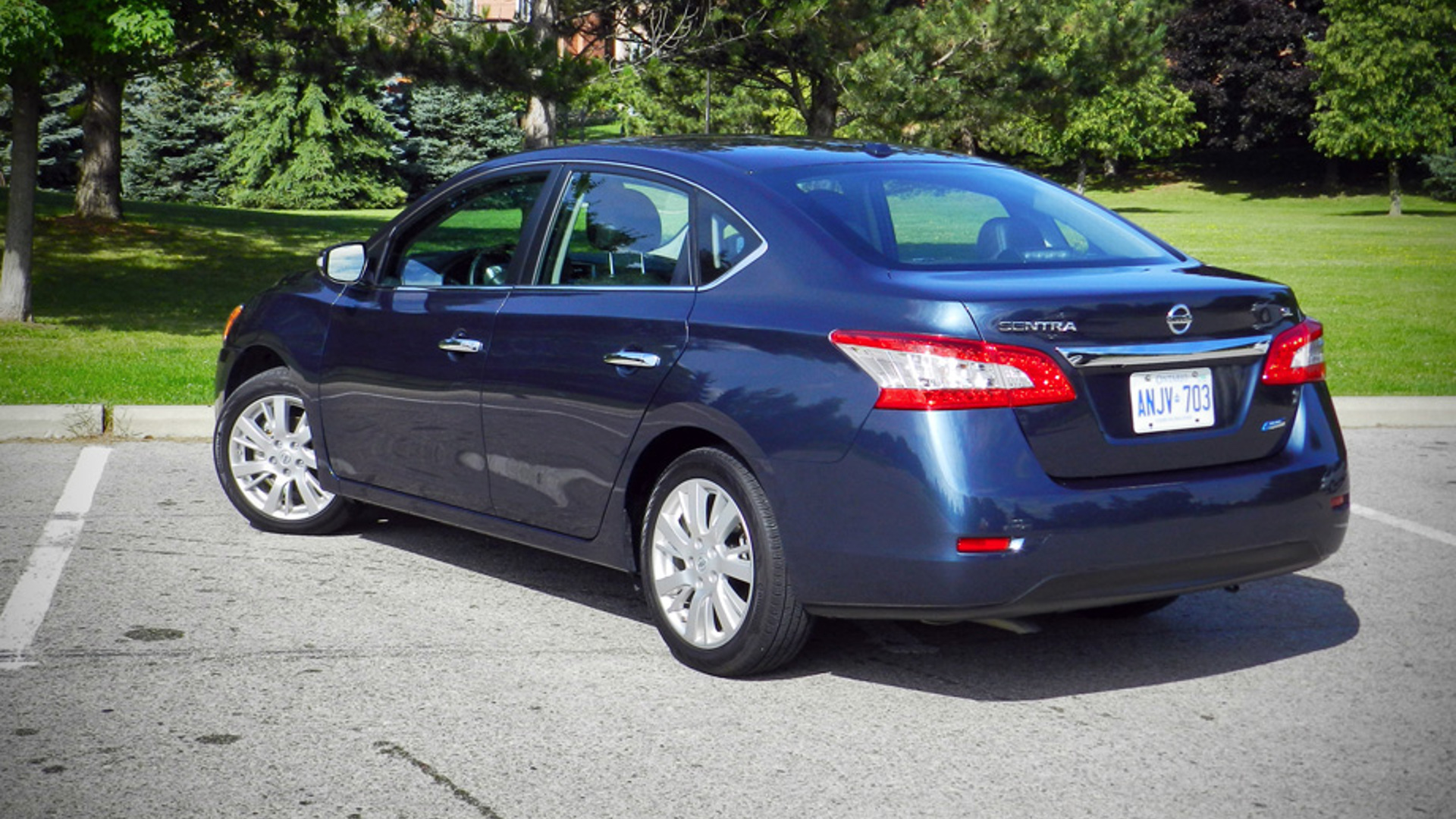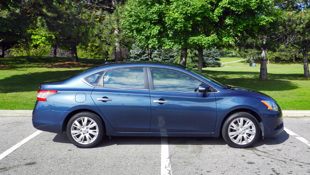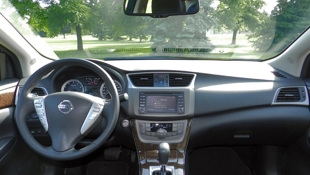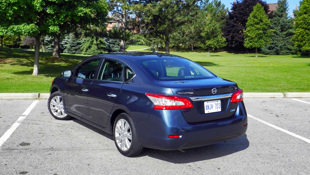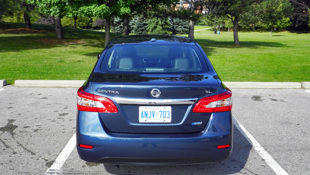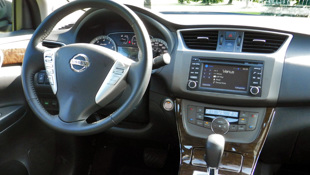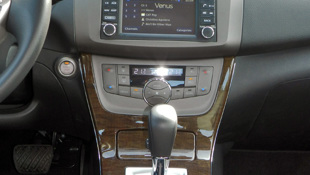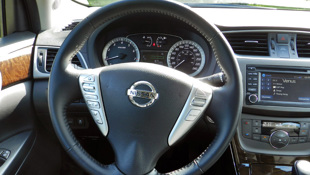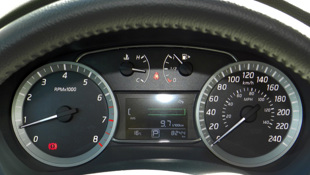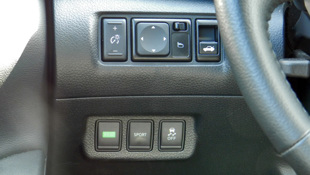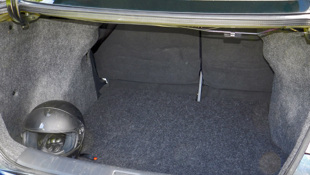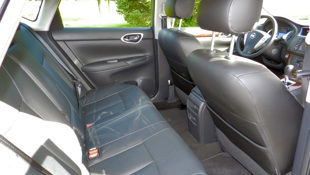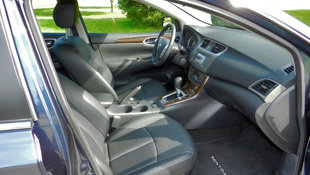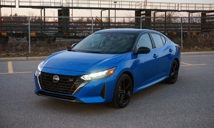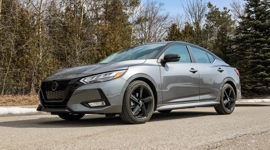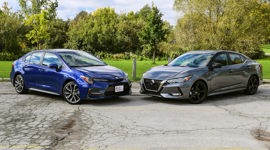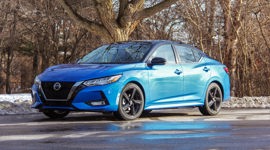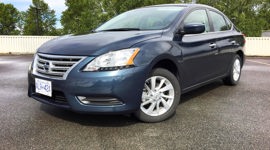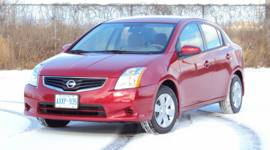 AutoTrader SCORE
AutoTrader SCORE
-
EXTERIOR STYLING7/10
-
INTERIOR7/10
-
PERFORMANCE5/10
-
COMFORT8/10
-
FUEL ECONOMY9/10
The small car market is a voracious one. It is the largest sales segment in Canada and the best represented in the overall sales charts. Four of the top 10 selling vehicles so far in 2014 are compact cars, the rest: pickups (four), the Dodge Caravan and the Ford Escape.
Compact cars lead the charge with over 224,000 units sold to date in 2014. Compact SUVs are the next-largest group with 203,066 units and pickup trucks are third with 191,988.
So that’s the lay of the land. Clearly there is a hunger in Canada for small, affordable, and frugal cars.
Enter the Nissan Sentra.
Skrillex fans will be disappointed to know that D-Step is not shorthand for dubstep (at least not in this instance) but for “Drive”.
With a 1.8L inline four mated to a D-Step CVT, the Sentra is taking aim squarely at the “frugal” part of that equation. In the sales charts mentioned above, it’s 8th in class, and 30th overall, with 8,734 sold so far this year – the Civic by comparison has sold 37,745, Elantra 32,346 and Corolla 29,946.
It’s those three plus the critically acclaimed Mazda3 that Nissan has benchmarked for this 2014 edition, taking pains to highlight its fuel economy competitiveness against the Civic in a television advertisement in which fuel pumps attack a Honda driver, who is rescued by a Sentra. The Sentra is good for 6.9 L/100 km combined versus 7.1 for the Civic, but both have the same city/highway figures of 7.8 and 6.0. Go figure.
The Sentra has more cargo capacity than the others, with 428 L and the second-highest passenger volume (2,716 L to the Corolla’s 2,761).
We tested the 2013 Sentra head to head against 10 of its competitors in a mega 11-car compact car comparison test last year and found its value and practicality to be top notch. The rear legroom and headroom, plus the cargo capacity were judged best of the lot, and it was its low price that helped the Sentra into fifth place.
The things that held it back were the driver’s seat comfort, handling, noise and vibration, features and the noisy CVT.
That one was a base model though, this one is far better equipped with a 5.8-inch touchscreen, hands-free text messaging (text to voice), dual-zone automatic climate control, heated leather seats, a moonroof and navigation. Worth noting, you can get navigation, proximity entry and SiriusXM at a lower price point than the chief competitors, and Nissan has a minor edge with its suite of Google-powered NissanConnect apps – though HondaLink is not far off in terms of functionality.
The driver’s seat has been redesigned to make it more comfortable and there is more sound deadening than the previous model. The springs and shocks have been retuned as well, but the Sentra still suffers from more pitch, dive and body roll than its competitors. Turn-in is impressive though, as is initial throttle response, and the suspension does a good job of soaking up the seams, bumps and animal carcasses one encounters on the highway.
The biggest improvement, however, comes from the CVT. The 2014 Sentra gets Nissan’s Xtronic CVT with new D-Step tuning.
Skrillex fans will be disappointed to know that D-Step is not shorthand for dubstep (at least not in this instance) but for “Drive”. A car powered by dubstep would be frightfully annoying to people who like actual music, but I digress. On second thought, maybe someone should start a dance called Drive Step – that would be cool.
The D-Step CVT puts a series of steps into the CVT ratios to mimic the feel of a traditional torque-converter automatic. The result is a tranny with perceptible shifts, and also one with less CVT drone and whine. This new edition is far quieter and less intrusive than previous offerings.
Virtual ratios are now common among CVTs, but my wife (who shares my vocation but writes for the enemy so won’t be named here) raised an interesting point. The purpose of a CVT is a smoother driving feel that improves fuel economy by finding the ideal gear ratio at all times – it feels different to an automatic, because it is fundamentally different. To artificially induce those elements only serves to remove the advantages of a CVT.
The only time the steps are useful is in spirited driving, when you can use the paddle shifters to select one of the virtual gears – Subaru has a similar system. I think the best compromise would be a system that operates like a normal CVT most of the time, with the steps only coming into play when the paddle shifters are used as Subaru does with its 2015 WRX CVT with driving modes.
Regardless, I’m still impressed by the improvements of Nissan’s latest CVT – I’m beginning to hate these things less.
The 1.8L still packs just 130 hp and 128 lb-ft from its 1.8L mill, which is sufficient to haul the 1,293 kg but not groundbreaking. Merging is comfortable if you’re not too shy with your right foot, but having to accelerate to highway speeds or merge from one ramp to another often will impact your fuel economy. A CVT requires a certain amount of finesse and patience I rarely display and consequently I finished the week with an average of 9.7 L/100 km.
The steering is light and easy to manage in tight confines, but it’s overboosted by the electric motors and lacks any significant feel. There is a lot of tire noise in underground carparks, which speaks to the cheap and hard economy-focused tires more than anything else.
Wind noise and road noise is well within the limits of decency for this category and price point, but the suspension clatters over larger bumps.
Styling-wise the Sentra lags behind its competitors. Externally it looks a little like my Year 10 geography teacher, inside there is “wood-tone” trim that looks a little bit like the safety railings on the ramps at a poker machine parlour.
It’s an interior that will appeal to those who enjoy simplicity with a hint of premium and I predict it will age well. The gauges are easy to read, the steering wheel controls are intuitive and I like the redundancy built into the touchscreen layout. Hard buttons grant rapid access to key functions, and the volume and tuning knobs allow quick adjustments. I appreciate Nissan’s layout with those knobs at the bottom of the screen, they end up being far closer than if they were at the top, preventing reach. The Google-powered apps are useful, and it’s clear Nissan expects to fill in additional custom apps in the future.
Next to the steering wheel you’ll find buttons for Eco and Sport. Sport does nothing perceptible, but eco mode has a dramatic impact on throttle response. I couldn’t stomach the setting long enough to give an indication on actual fuel savings, but I’d suggest it will be high given the way it dulls the pedal.
Visibility is excellent in all directions thanks to a relatively low belt line and a large greenhouse. The same profile that contributes to the Sentra’s dorky appearance from outside is welcome from the driver’s seat. The interior materials are soft where they need to be, helping sell the upscale experience and making long distances comfortable. Competence is the key word here.
In a nutshell, the Sentra is an above-average car in almost every regular commuter setting. Its virtues will appeal more to the practical and logical than the emotional, and that’s not a criticism.
It’s smooth, easy to drive and comfortable, without any fuss or pretense. Nissan has packed a lot of features into a larger-than-expected package. Encouragingly, Nissan has thrown its weight behind the Sentra in Canada with a suite of TV ads, and that push could help it creep closer to the stalwarts at the top of the table. In this hyper-competitive segment the Sentra is a quiet achiever.
Competitors:
Chevrolet Cruze Diesel
Dodge Dart GT
Ford Focus Titanium
Honda Civic Touring
Hyundai Elantra GT SE
Kia Forte SX
Mazda3 Sport GS
Subaru Impreza Sport
Toyota Corolla
Volkswagen Jetta
| Model Tested | 2014 Nissan Sentra SL |
|---|---|
| Base Price | $24,198 |
| A/C Tax | $100 |
| Destination Fee | $1,567 |
| Price as Tested | $26,000 |
|
Optional Equipment
Metallic Pearl Paint - $135
|
|
